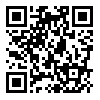Volume 4, Issue 2 (9-2017)
jhbmi 2017, 4(2): 154-167 |
Back to browse issues page
Download citation:
BibTeX | RIS | EndNote | Medlars | ProCite | Reference Manager | RefWorks
Send citation to:



BibTeX | RIS | EndNote | Medlars | ProCite | Reference Manager | RefWorks
Send citation to:
Langarizadeh M, Orooji A. De-identification of Electronic Health Records Using Machine Learning Algorithms. jhbmi 2017; 4 (2) :154-167
URL: http://jhbmi.ir/article-1-211-en.html
URL: http://jhbmi.ir/article-1-211-en.html
Ph.D Student of Medical Informatics, Health Information Management Dept., School of Health Management and Information Sciences, Iran University of Medical Sciences, Tehran, Iran
Abstract: (7063 Views)
Introduction: Electronic Health Record (EHR) contains valuable clinical information that can be useful for activities such as public health surveillance, quality improvement, and research. However, EHRs often contain identifiable health information that their presence limits the use of the records for sharing and secondary usages. De-identification is one of the common methods for protecting the confidentiality of patient information. This systematic review has focused on recently published studies on the usage of de-identification methods based on Machine Learning (ML) approaches for removing all identifiable information from electronic health records.
Methods: A systematic review was performed in electronic databases like PubMed and ScienceDirect between 2006 and 2016. Studies were assessed for adherence to the CASP checklists and reviewed independently by two investigators. Finally, 12 articles were matched with inclusion criteria.
Results: The selected studies have been discussed in terms of used methods and knowledge resources, types of identifiers detected, types of clinical documents, challenges and achieved results. The results showed that ML-based de-identification is a widely invoked approach to protect patient privacy when disclosing clinical data for secondary purposes, such as research. Also, the combination of the ML algorithms and some techniques such as pattern matching and regular expression matching could decrease need to train data.
Conclusion: There is a lot of identifiable information in medical records. This study showed ML- based de-identification methods can intensively reduce the disclosure risk of information.
Methods: A systematic review was performed in electronic databases like PubMed and ScienceDirect between 2006 and 2016. Studies were assessed for adherence to the CASP checklists and reviewed independently by two investigators. Finally, 12 articles were matched with inclusion criteria.
Results: The selected studies have been discussed in terms of used methods and knowledge resources, types of identifiers detected, types of clinical documents, challenges and achieved results. The results showed that ML-based de-identification is a widely invoked approach to protect patient privacy when disclosing clinical data for secondary purposes, such as research. Also, the combination of the ML algorithms and some techniques such as pattern matching and regular expression matching could decrease need to train data.
Conclusion: There is a lot of identifiable information in medical records. This study showed ML- based de-identification methods can intensively reduce the disclosure risk of information.
Type of Study: Narrative review articles |
Subject:
Special
Received: 2017/07/17 | Accepted: 2017/09/2
Received: 2017/07/17 | Accepted: 2017/09/2
Send email to the article author
| Rights and permissions | |
 |
This work is licensed under a Creative Commons Attribution-NonCommercial 4.0 International License. |



